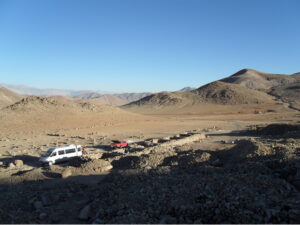
- Chile | 16 September 2022

What has been Liebherr’s biggest milestone since its establishment in Chile in 2001?
Liebherr has achieved several significant milestones since its establishment in Chile in 2001. One of the turning points for the company was securing its second contract with Codelco at the Radomiro Tomic mine, which eventually led to its third contract at Collahuasi. Another major achievement was the start of the ESTRS trial in Escondida for BHP in October last year to determine their future truck requirements. Liebherr also developed its ultra-class excavator fleets, with Thiess entering the market in 2017. In 2020, Liebherr delivered the first R9800 800-tonne excavator for Liebherr in North and South America to BHP at the Spence mine, which was a proud moment for the company. Liebherr is also proud of the strength of its organization that allowed it to start successful projects in 2020 amid challenging Covid restrictions.
How was Liebherr able to maintain supply chain continuity in the face of the pandemic and the resulting delays?
The management team at Liebherr prioritized the safety of their employees during the pandemic and ensured that government regulations were followed. They also relied on their expertise and head office in France, which was also experiencing strict quarantine conditions, including the closure of their excavator factory. Liebherr has a very advanced planning department for spare parts supply, projecting parts usage 18 months in advance. Although there were some delays in deliveries of spare parts, Liebherr managed to use its existing stock in Chile to compensate. They also adjusted their orders in 2020 to account for increased lead times from their suppliers due to Covid. In 2021, Liebherr continues to use these adjustments to its processes to maintain parts supply.
Automation is playing a greater role in the Chilean mining industry. How does the technology Liebherr provides allow it to differentiate itself in the market?
Liebherr has witnessed an increasing demand for automated products in Chile, especially for autonomous trucks and smart equipment. Liebherr offers its truck autonomy packages via an open protocol philosophy, which allows their customers to use their truck with any management system available on the market, giving the mines more flexibility as they are not bound to one OEM supplier. Liebherr also offers its LMD system (Liebherr Mining Data), allowing data from the equipment to be analyzed remotely, instead of physically downloading the data from the truck. This allows Liebherr to send data on a truck’s status so they can study the truck’s parameters to plan maintenance accordingly. Liebherr is constantly developing this system to improve.
Did the pandemic accelerate the move towards autonomous mining in Chile?
The Chilean mining industry was already leading the way in developing more autonomous mining before the pandemic. However, as social distancing measures were enforced, there was a stronger emphasis on autonomous mining equipment as the mines wanted to minimize the exposure of their workforce. For Liebherr, it is important to consider that the autonomous technology and new developments need to demonstrate benefit to the operations and not solely a reduction in personnel. Liebherr believes that in the upcoming years, the mining industry will struggle to find people that want to work on mine sites and will prefer to be in major cities. This will only push the industry towards processes that rely less on a physical presence in the mine. Liebherr has continued with its apprentice and training programs so they have the necessary skills for this future workforce.














